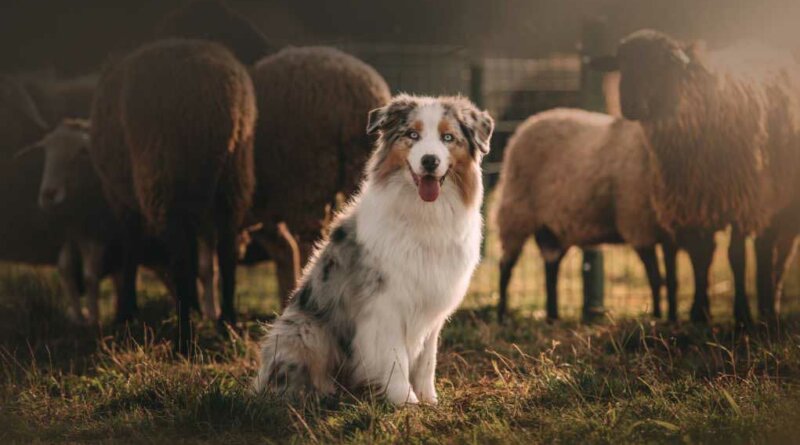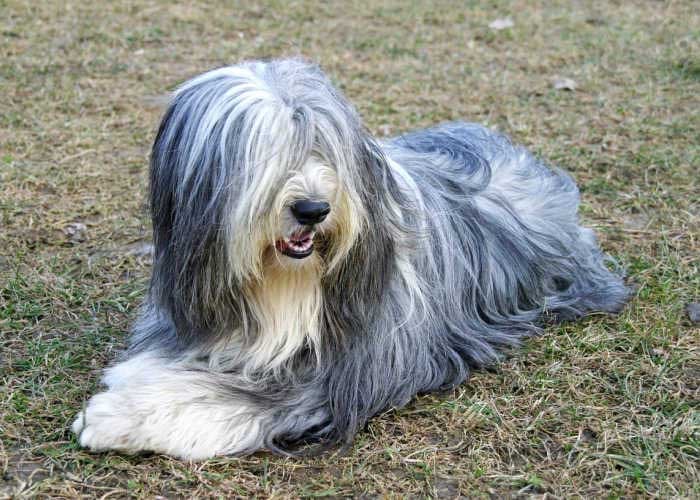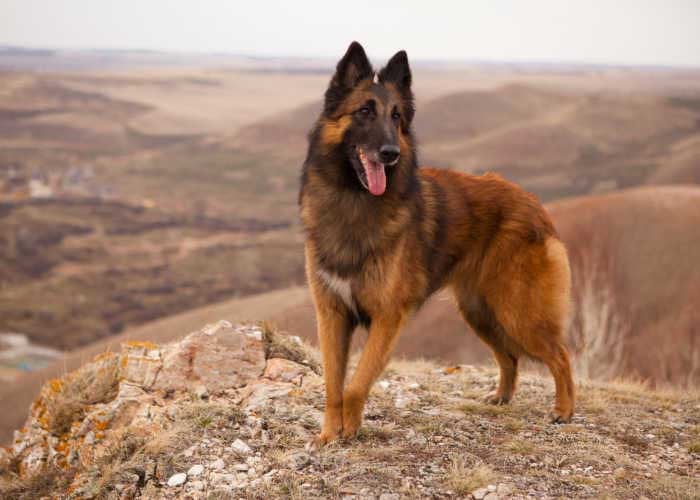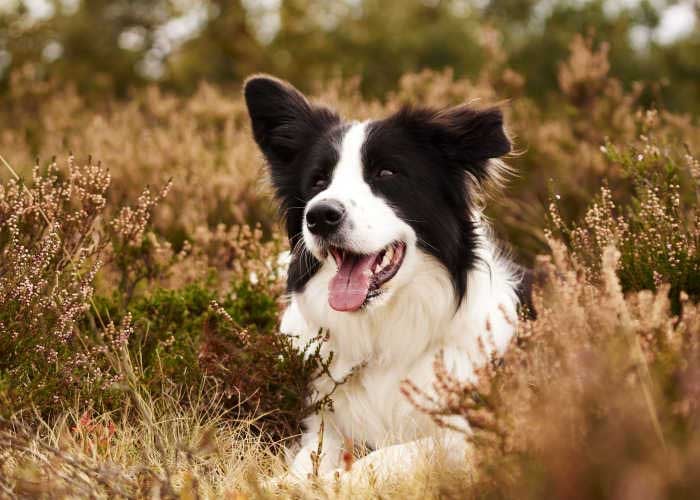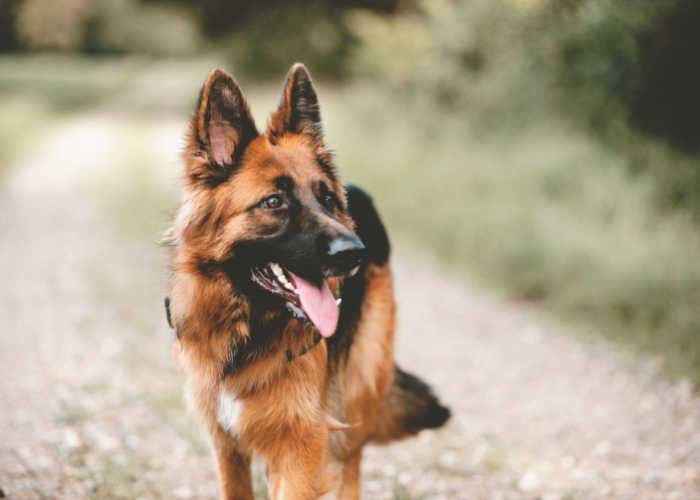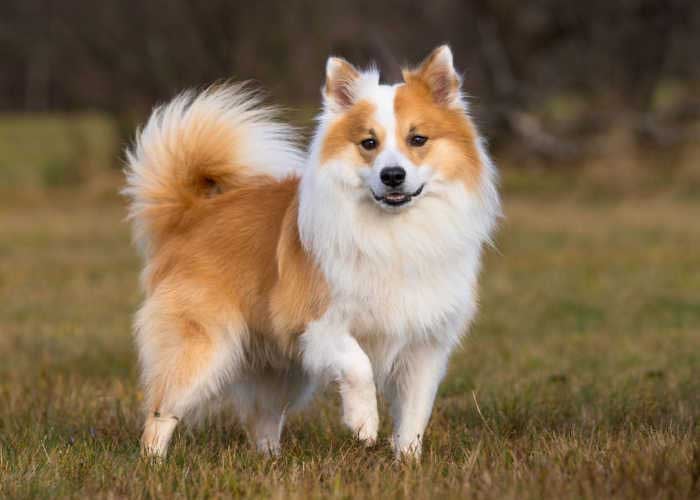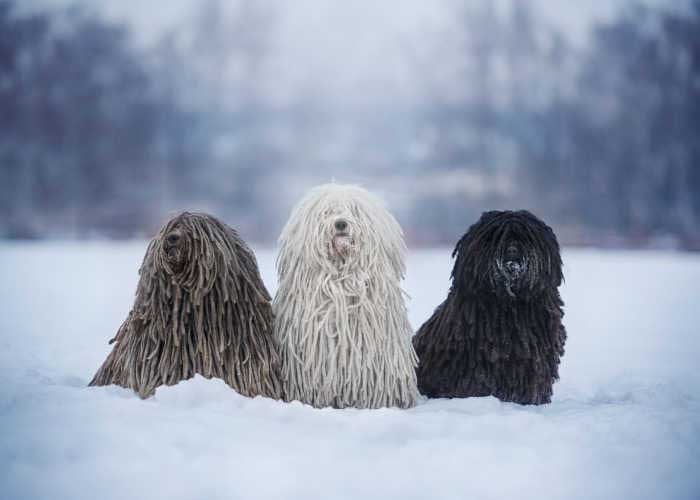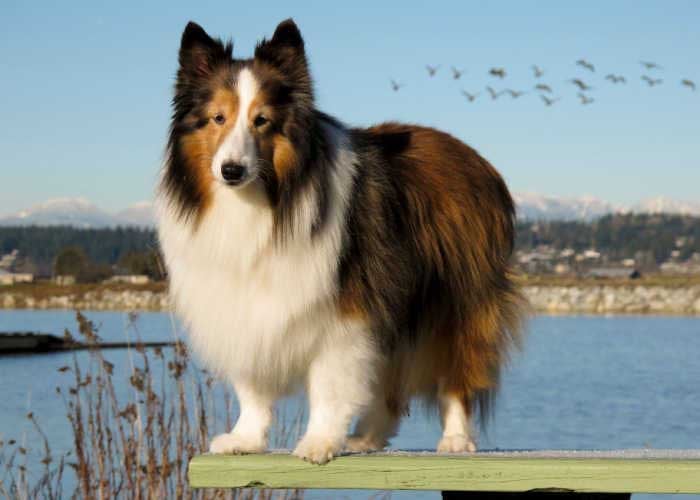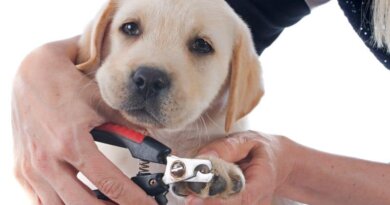31 Herding Dog Breeds – Top Dog Tips
As the nation’s most esteemed purebred dog registry, the American Kennel Club currently recognizes 200 dog breeds categorized into seven groups.
Can you tell which of those are herding dog breeds?
The Herding Group was created in 1983 with its members formerly belonging to the Working Group.
These breeds all possess the innate ability to control the movement of other animals. They were meant to gather, herd, and defend livestock.
As domestic pets, the great majority of herding dogs never come into contact with farm animals.
However, many of them gently herd their owners, especially the family’s children, out of sheer instinct.
In general, these herding breeds make wonderful companions and are quite perceptive to respond splendidly to training exercises.
Herding Dog Breeds: Understanding Herding Behavior
All forms of herding are modified predatory behavior.
Through selective breeding, humans have weakened the canine instinct to view sheep and cattle as prey while still preserving their hunting abilities, leading to the development of efficient herding dogs.
These dogs use different methods to control other animals.
Some breeds, like the Australian Cattle Dog, nip at the heels of the animals to keep them moving which is why they are called heelers or driving dogs. They typically stay behind the herd.
Others, such as the Border Collie, get in front of the livestock and use what is known as a “strong eye” to stare them down.
They are called headers or fetching dogs that keep the animals in a group.
Certain breeds use their loud, powerful bark to call in flocks of sheep while some have traditionally been used as tending dogs, serving as a “living fence” to keep the flock from eating valuable crops or getting lost on roadways.
Traits of the Herding Group
These herding breeds are remarkably smart, learning every command their owners give them while they’re working in the field and on the farm.
Since they are used to keeping an eye on large flocks, these dogs are renowned for being extremely attentive.
Your pooch may even develop an instinctive need to protect you, your house, and your loved ones.
They adore their human companions and often form strong bonds with one person in particular.
Still, their loyalty makes them wonderful family dogs as well as single-person pets.
The physical attributes of the herding dogs were developed during the selection process, enabling them to perform their duties in the best manner possible.
They are strong and incredibly resilient. Because of their compressed toes, thick paw pads, and powerful claws, their paws are well protected against thorns and jagged stones.
The breed’s origin region is known for its extreme temperatures and wet seasons, so the coat has structure and solidity to guard against both.
All herding dog breeds have keen vision and hearing.
They have well-pigmented eyes, lips, noses, and paw pads since pink skin is too sensitive and prone to cuts and sunburn.
Practically tireless canines who yearn for action are constantly on the move as they do their duties.
History of Herding Dog Breeds
The creation of herding dog breeds is linked to the growth of cattle breeding.
At some point between 8 and 7 millennia BC, sheep and goats were domesticated.
Because horses and donkeys were still not sufficiently domesticated, early herders had to carry their cattle for grazing on foot which made shepherding a challenging job to do.
Dogs were then used by sheepherders to assist with a variety of chores around the 1570s.
These creatures that had previously assisted humans in hunting now work as helpers with livestock maintenance.
In the early stages of cattle breeding, they were primarily responsible for guarding herds against predators.
For such purpose, herding dogs’ qualities were then set that they had to be tough, brave, decisive, able to stand alone against a large predator, and most importantly, capable of protecting their herd.
Aside from handling large numbers of livestock and defending farm animals, these herding breeds also excelled at other jobs, such as working in police K-9 units, the military, and as guide or service dogs.
Herding Dog Breeds in the Modern World
In nations where herding is still practiced, herding dogs continue to serve their primary function and are valued as reliable.
They are even considered irreplaceable helpers that can reduce labor expenses and prevent the purchase of costly machinery.
Today, they are a popular choice as family pets and are at their best when given a task.
Their energy level and intellect make them ideal canine athletes.
They still have herding instincts, so training them not to nip at people’s heels or bump them to ‘herd’ their family may be necessary.
Among the most popular breeds as family companion dogs are the Australian Shepherd, Collie, Shetland Sheepdog, and Old English Sheepdog.
Dogs of herding breeds now often reside in urban or suburban areas.
Considering their herding behavior and traits, their owners must maintain their physical and mental health.
Owners usually purchase a few sheep to give their dogs the experience for which they were bred.
31 Herding Dog Breeds
Anyone wishing to add a furry, four-legged member to their family should definitely consider a herding dog breed.
After all, these dogs are not only intelligent but also typically active, hardworking, and unwaveringly loyal to their “pack.”
As for their sizes and shapes, they range from little wonder fluffballs like Corgis to large guys like Beaucerons.
Once you’ve taken a good look at these 31 breeds that form the group, you’ll probably want to take one (or more!) of these stunning creatures home.
Australian Cattle Dog
- Height: 17 – 20 inches
- Weight: 35 – 50 pounds
- Life Expectancy: 12 – 16 years
Recognized in 1980, the Australian Cattle Dog descended from Australia’s wild dogs called the Dingoes combined with the Collies and Dalmatians.
Bred to drive and herd cattle on Australia’s vast ranches, they made vital contributions to the development of the continent’s beef industry, which is a significant sector of the Australian economy.
Australian Shepherd
- Height: 18 – 23 inches
- Weight: 40 – 65 pounds
- Life Expectancy: 12 – 15 years
Recognized in 1991, Australian Shepherds come from a line of the best herders in Europe.
The Basques, a native people who live on the border of France and Spain, developed their long-standing reputation as top-notch shepherds.
Eventually, they sailed to the uninhabited Australian continent accompanied by their devoted shepherd dogs.
The Basque shepherds polished their dogs throughout their extended stay in Australia by selectively breeding them with British imports, such as Border Collies and Collies.
The brave Basques fled Australia for California in search of greener pastures after expanding their flocks.
Bearded Collie
- Height: 20 – 22 inches
- Weight: 45 – 55 pounds
- Life Expectancy: 12 – 14 years
Recognized in 1976, the Bearded Collie was originally known as the Mountain Collie and Highland Collie.
They have made their living for centuries in the Scottish Highlands as hardy herding and droving dogs.
They are valued by shepherds for their ability to work long days in the harsh climate and rugged terrain of Scotland.
Beauceron
- Height: 24 – 27.5 inches
- Weight: 70 – 110 pounds
- Life Expectancy: 10 – 12 years
Recognized in 2007, the Beauceron, also referred to as the Berger de Beauce or the Bas Rouge, is a French shepherd dog that got its name from a wide agricultural area southwest of Paris.
It has served in a variety of roles since its introduction in the late Middle Ages, including soldier, bodyguard, rescuer, companion, and unrivaled livestock mover.
Due to its endearing personality and wide range of working skills, the breed has become more and more well-known across the Atlantic.
Belgian Laekenois
- Height: 22 – 26 inches
- Weight: 55 – 65 pounds
- Life Expectancy: 10 – 12 years
Recognized in 2020, Belgian Laekenois’ primary responsibility was to watch after clothes that were drying in the fields besides keeping an eye over and caring for the flock.
They were motivated workers and quick learners, which made them viable candidates for the job at hand.
Then, during both World Wars I and II, they were required to work as courier dogs.
Belgian Malinois
- Height: 22 – 26 inches
- Weight: 40 – 80 pounds
- Life Expectancy: 14 – 16 years
Recognized in 1959, the Belgian Malinois is one of four herding dog breeds native to Belgium that were first developed in and around the city of Malines in the country’s northwest.
In their home country, they have long been regarded as the best livestock herders.
They were initially developed by serious dog enthusiasts who rejected the fleeting fads and preferences of pet owners in favor of breeding dogs with a solid reputation for working.
Due to this emphasis on performance, the Mal became the preferred dog of Belgian cattlemen and sheepherders.
Belgian Sheepdog
- Height: 22 – 26 inches
- Weight: 45 – 75 pounds
- Life Expectancy: 12 – 14 years
Recognized in 1912, the Belgian Sheepdog was given the name Groenendael thanks to Nicolas Rose, a well-known breeder in the 1890s who had a restaurant called the Chateau Groenendael close to Brussels.
By the start of the 20th century, the adaptability and work ethic of Belgian Sheepdogs had spread beyond the grazing grounds of Belgium.
During this time, they were used as police dogs in Paris and New York.
Belgian Tervuren
- Height: 22 – 26 inches
- Weight: 45 – 75 pounds
- Life Expectancy: 12 – 14 years
Recognized in 1959, the Belgian Tervuren derived its name from the village of Tervuren.
Belgian farmers were in desperate need of all-around herding and guard dogs before the industrial era.
These dogs’ protective nature kept both the farm and the family safe and their herding prowess helped in guarding and moving stock.
Today, they are champions at dog shows, on agility courses, in obedience and herding trials, and are used as K-9s by the military and police as search and rescue dogs and as service dogs for the disabled.
Bergamasco
- Height: 22 – 23.5 inches
- Weight: 57 – 84 pounds
- Life Expectancy: 13 – 15 years
Recognized in 2015, the Bergamasco has been associated with the Alpine town of Bergamo, which is close to Milan, for many generations.
They are among several Middle Eastern breeds that were traded by the seafaring traders known as the Phoenicians throughout the Mediterranean region in the olden days.
Berger Picard
- Height: 21.5 – 25.5 inches
- Weight: 50 – 70 pounds
- Life Expectancy: 12 – 13 years
Recognized in 2015, the Berger Picard is possibly the oldest of the several pasture dogs created by French shepherds throughout the years.
The prehistoric central-European Celts who invaded Gaul are said to have brought this nomadic herder to northern France.
It is a breed with a long history and close ties to French herders like the Briard and Beauceron, though not all authorities agree with this theory.
Border Collie
- Height: 18 – 22 inches
- Weight: 30 – 55 pounds
- Life Expectancy: 12 – 15 years
Recognized in 1995, the Border Collie is a compact and agile herder that was well-suited for working livestock in the rugged, mountainous highlands of Scotland and Wales.
This breed was developed when the ancient Roman dogs and the Viking spitzes were crossed.
Anyone who has witnessed Borders in action would have to agree that they are the best herders in the world due to their sweeping outruns, subtle crouching and creeping, and explosive bursts of concentrated energy.
Bouvier des Flandres
- Height: 23.5 – 27.5 inches
- Weight: 70 – 110 pounds
- Life Expectancy: 10 – 12 years
Recognized in 1931, Bouvier des Flandres’ major job was moving cattle, as suggested by the breed’s numerous early names (cow dog and cattle driver).
Bouviers worked as herders, watchdogs, guardians, and cart-pullers because frugal farmers in France and the Low Countries chose to own one multi-tasking dog rather than a group of experts.
Briard
- Height: 22 – 27 inches
- Weight: 55 – 100 pounds
- Life Expectancy: 12 years
Recognized in 1928, the Briard, or Chien Berger de Brie as the breed is known in its homeland, has been working pastures since the reign of Charlemagne.
It is named after Brie, a dairy-producing region well renowned for its creamy cheese.
Briards are two-in-one canines created by frugal French farmers who wanted a sheepdog with agility and a rugged, fearless flock protector that could fend off predators who would steal sheep.
Canaan Dog
- Height: 19 – 24 inches
- Weight: 35 – 55 pounds
- Life Expectancy: 12 – 15 years
Recognized in 1997, Canaan Dogs are named for the region that is now comprised of Lebanon, Israel, and some of the neighboring nations.
These dogs have assisted shepherds in herding, droving, and guarding for thousands of years.
The year 70 marked the turning point in the breed’s known history.
At that time, the Romans destroyed Jerusalem and scattered the Israelites throughout the Middle East and the Mediterranean basin, ending their longstanding reign in Judea.
Canaan Dogs took refuge in the Negev Desert after their owners left and their flocks dispersed, where they thrived and, for the most part, lived undomesticated until the 20th century.
Cardigan Welsh Corgi
- Height: 10.5 – 12.5 inches
- Weight: 25 – 38 pounds
- Life Expectancy: 12 – 15 years
Recognized in 1935, the Cardigan Welsh Corgi, the older of the two corgi breeds recognized by the AKC, is a gorgeous dog that got its name from the Welsh medieval kingdom of Cardiganshire.
Throughout the long history of the breed, Cardigans have served in different roles including all-around farm dog, hunting partner, family guardian, and athlete.
Cardigans have a long history of being associated with British tenant farmers, who relied on their dogs to help them scratch out a modest livelihood from the pasture land that the crown granted them.
Collie
- Height: 22 – 26 inches
- Weight: 50 – 75 pounds
- Life Expectancy: 12 –14 years
Recognized in 1885, the history of the Collie has been significantly influenced by Queen Victoria’s passionate love for Scotland.
In the latter half of the 19th century, it was the dog-loving Victoria who made the native herding breed famous among her courtiers and subjects during her numerous extended visits to Balmoral Castle in the Scottish Highlands.
Her passion for Collies helped the breed transform from a small shepherd dog to a canine superstar.
Entlebucher Mountain Dog
- Height: 16 – 21 inches
- Weight: 40 – 65 pounds
- Life Expectancy: 11 – 13 years
Recognized in 2011, Entlebucher Mountain Dogs were used as farm dogs and guard dogs in the days before industrial agriculture.
Their main duty, however, was to herd their livestock up into high mountain pastures in the summer, watch over them throughout the grazing season, and then move them back down into the valley for the winter.
Finnish Lapphund
- Height: 16 – 21 inches
- Weight: 33 – 53 pounds
- Life Expectancy: 12 – 15 years
Recognized in 2011, Lapphunds, or “Lapps’ dogs,” were developed in ancient times to hunt reindeer across vast stretches of frozen land.
Like their owners, they transitioned from hunting to herding reindeer while continuing to serve as their owners’ hunting dogs, watchdogs, and close companions.
German Shepherd Dog
- Height: 22 – 26 inches
- Weight: 50 – 90 pounds
- Life Expectancy: 7 – 10 years
Recognized in 1908, the German Shepherd Dog is a member of the family of German herding dogs, whose types varied from one region to another up until the late 19th century.
The breed has become the favored dog for police and military units all over the world due to the development of modern livestock management and the decline of canine herding.
Icelandic Sheepdog
- Height: 16.5 – 18 inches
- Weight: 25 – 30 pounds
- Life Expectancy: 12 – 14 pounds
Recognized in 2010, the Icelandic Sheepdog’s ancestors were spitz-type dogs used by the Icelanders to herd sheep and round up horses.
Norse settlers arrived in Iceland about 1,100 years ago after sailing across the Norwegian Sea to form a new Scandinavian nation on the uninhabited island.
Miniature American Shepherd
- Height: 13 – 18 inches
- Weight: 20 – 40 pounds
- Life Expectancy: 12 – 13 years
Recognized in 2015, the Miniature American Shepherd became especially well-liked among equestrians traveling to horse events, as their intelligence, devotion, and size made them a perfect travel companion.
They were deliberately bred to become even smaller in the 1960s after being discovered working the American rodeo circuit.
Norwegian Buhund
- Height: 16 – 18.5 inches
- Weight: 26 – 40 pounds
- Life Expectancy: 12 – 15 years
Recognized in 2009, the Norwegian Buhund’s name originated from the Norwegian word “bu,” which means “homestead” or “farm.”
They have long been used as herders, protectors of flocks and families, and farm laborers.
Old English Sheepdog
- Height: 21 – 22 inches and up
- Weight: 60 – 100 pounds
- Life Expectancy: 10 – 12 years
Recognized in 1888, the Old English Sheepdog is one of the genuinely iconic dogs of the British Isles, along with the Bulldog and Collie.
The county of Devon, along with Somerset and the Duchy of Cornwall, are where the breed, sometimes known as the “Bobtail,” is thought to have originated.
Pembroke Welsh Corgi
- Height: 10 – 12 inches
- Weight: 28 – 30 pounds
- Life Expectancy: 12 – 13 years
Recognized in 1934, the Pembroke Welsh Corgi and his cousin, the Cardigan Welsh Corgi, have been distinct breeds since the late 1800s, though they frequently mixed in the old Welsh breeding grounds of Pembrokeshire and Cardiganshire.
Just in case you get confused, the Pembroke’s ears are sharp and upright while the Cardi’s are rounded. Also, the Cardi’s tail is far longer than the Pembroke’s.
These are currently the most obvious physical variations between the breeds.
Polish Lowland Sheepdog
- Height: 17 – 20 inches
- Weight: 30 – 50 pounds
- Life Expectancy: 12 – 14 years
Recognized in 2001, Polish Lowland Sheepdogs are believed to be the result of crossing Hunnic dogs with the local breed in the region that is now known as Poland.
They were designed to be fearless guard dogs at night and calm flock dogs during the day.
These dogs were introduced to Scotland by traders in the 1500s, where it’s thought that they contributed to the genes of the Bearded Collie.
Puli
- Height: 16 – 17 inches
- Weight: 25 – 35 pounds
- Life Expectancy: 10 – 15 years
Recognized in 1936, Pulik are believed to have been brought to Europe by the Magyars, the same Asian nomads who brought the Vizsla to the West, roughly a thousand years ago.
Large flocks of sheep were herded by Pulik across the Hungarian plains, where their corded coats shielded them from the harsh winters.
Pumi
- Height: 15 – 18.5 inches
- Weight: 22 – 29 pounds
- Life Expectancy: 12 – 13 years
Recognized in 2016, the Pumi is a product of the Puli’s interbreeding with terriers and herding dogs from Western Europe between 300 and 400 years ago.
For years, it was thought of as a localized variation of the Puli. This changed when the two breeds started to be standardized in the early 20th century.
Pyrenean Shepherd
- Height: 15.5 – 21 inches
- Weight: 15 – 30 pounds
- Life Expectancy: 17 – 19 years
Recognized in 2009, Pyrenean Shepherds descend from an ancient line of herding canines among shepherds of the Pyrenees, which are the mountains that naturally divide France and Spain.
Nobody knows for sure how long they have been shepherding flocks from one grazing region to another throughout the Pyrenean slopes and valleys, but they continue to do so in their native country even today.
Shetland Sheepdog
- Height: 13 – 16 inches
- Weight: 15 – 25 pounds
- Life Expectancy: 12 – 14 years
Recognized in 1911, Shetland Sheepdogs were first bred in the rocky Shetland Islands, the most northern region of the United Kingdom.
Farmers used them to herd sheep, horses, and chickens.
Before the early 20th century, they practically lived in isolation from other breeds and were not well recognized outside of Britain.
Spanish Water Dog
- Height: 15.75 – 19.75 inches
- Weight: 31 – 49 pounds
- Life Expectancy: 12 – 14 years
Recognized in 2015, the versatile Spanish Water Dog has long been a common sight in the lakes and meadows of the Iberian Peninsula, yet it is unclear how it arrived there.
According to one theory, the Moors who once controlled Spain introduced it from North Africa.
Others claim that the breed was brought to Spain by Turkish traders, hence its old moniker “The Turkish Dog.”
Swedish Vallhund
- Height: 11.5 – 13.75 inches
- Weight: 20 – 35 pounds
- Life Expectancy: 12 – 15 years
Recognized in 2007, the Swedish Vallhund is believed to be the result of a mix between Welsh corgis and Scandinavian spitz dogs.
Although the exact origins of the breed are unknown, it is known that for many years in western Sweden, Vallhunds served as hardy farmhands and cattle dogs.
FAQs about Herding Dog Breeds
What does it mean when a dog is herding?
Dogs’ learned orders and innate predatory drive are combined to form herding behavior.
This could involve following closely after people or attempting to herd a group of animals away.
What are the traits of herding dog breeds?
Herding breeds are generally hardworking, athletic, lively, focused, very intelligent, quick learners, and obedient.
These characteristics identify dogs who need daily mental and physical exercise for their well-being.
If left to their ways, these dogs may become bored and exhibit negative behaviors.
What is herding dog breeds good for?
Herding dogs were created to gather, herd, and guard livestock like sheep or cattle, as their name suggests.
They all possess the innate ability and impulse to control the movement of other creatures because of their shared ancestry.
Herding Dog Breeds: Final Thoughts
If you’re looking for a dedicated, hard-working animal companion, one from the herding dog breeds may be the perfect choice for you!
Alert, athletic, loyal, and intelligent—no wonder they are the most well-known canines on the planet given that these traits are most frequently used to describe them.
So, are they the dogs that you want?
People purchase herding dogs without the ability to commit to the lifetime of these animals. If you want to bring a pup home, consider adopting one.
There are many herding breeds in need of fostering.
Still, gather more information before getting a puppy to see compatibility with your lifestyle.
You may visit various breeders and see the dogs yourself. Find a reputable breeder who will show health clearances to prove that the dogs are clear of health conditions.
There are national parent clubs that protect and promote these breeds.
Members in every state will be your point of contact if you are considering adding herding dog breeds to your home.
READ NEXT: Working Dog Breeds

